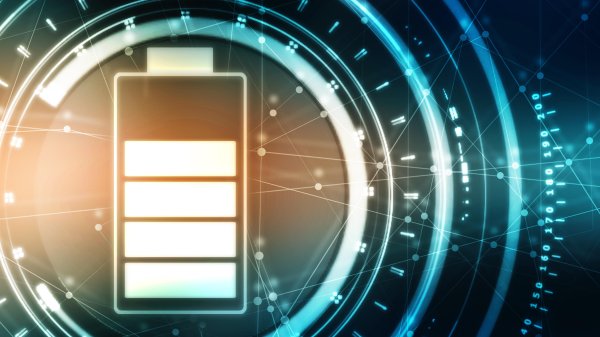A flow battery contains liquid phase electrodes separated by an ion-permeable membrane. Liquid solutions of redoxactive species are pumped into the cell for charging and discharging and return to external storage tank afterwards. Traditional enclosed batteries are not able to maintain discharge at peak for sufficiently long duration to adequately regulate wind or solar power output. In contrast, flow batteries can independently scale the power and energy components of the system by storing the electro-active species outside the battery container, which makes itself a promising candidate to store energy from electrical grid. Existing flow batteries are based on metal ions in acidic solution, which are of inherent drawbacks such as corrosion, cost, abundance and cycling efficiency, thus not ideal for large-scale commercialization. Recently there are reports for alkaline quinone flow batteries. However, the anion exchange rate is much lower than proton in acid solution, and the cost of anion exchange membrane is high. An alternate option is to use two immiscible electrolytes.
When two liquid phases are in contact, the partition of the charge carriers between the two adjacent phases occurs due to the difference in energies of the carriers in both phases, and an interfacial region is built up. The charge carrier (i.e., electrons, ions) could selectively transfer at the interface between two immiscible electrolyte solutions (ITIES). Compared to the traditional one phase flow battery, the ITIES in biphasic redox flow battery eliminates the usage of costly membrane. The flow battery is typically installed with the other renewable energy conversion devices, like solar panels and wind turbines. It would further save the cost if the immiscible electrolyte system can serve the function of solar energy conversion, as photo-ionic cells. The working principle is that solar energy is converted to redox fuels and separated into different phases to prevent recombination. The concentrated redox fuels are then converted to electricity via flow battery. A handful of biphasic redox flow batteries and photo-ionic cells have been reported since 2014. However, this field is in its infancy, leaving a vast amount of space for exploration and improvements.
Resulting Publications
- Zhang, H., Han, Y., Lai, J., Wolf, J., Lei, Z., Yang, Y., & Shi, F. (2024). Direct extraction of lithium from ores by electrochemical leaching. In Nature Communications (Vol. 15, Issue 1). Springer Science and Business Media LLC. https://doi.org/10.1038/s41467-024-48867-0







